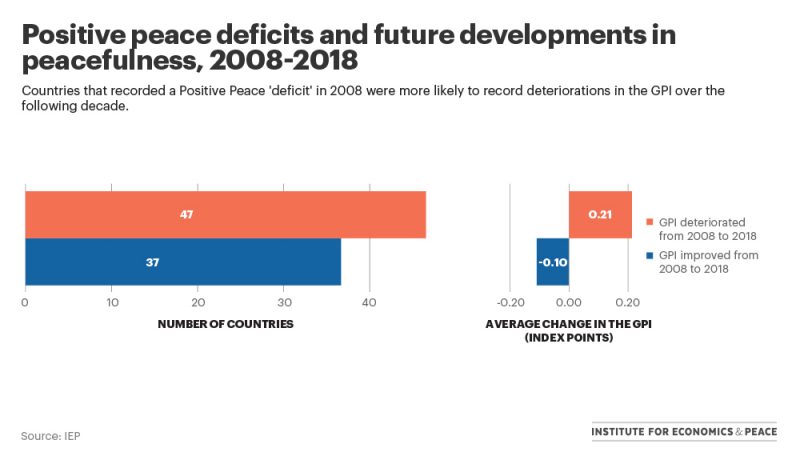What data can signal future predictions in peace and conflict? Countries improving in Positive Peace are more likely to resolve conflicts quickly.
Countries that experience Positive Peace deficits are more likely to deteriorate into states of violence.
This chart shows that of the 84 countries that recorded Positive Peace deficits in their 2008 rankings, 47 experienced deteriorations in negative peace over the following decade.

Positive Peace is defined as the attitudes, institutions and structures that create and sustain peaceful societies, and can be used as a gauge of resilience: the ability of a society to resolve tensions without resorting to violence.
Countries that have high stocks of Positive Peace have a lower chance of falling into violence.
Some countries score much higher on the IEP’s Global Peace Index than their Positive Peace score would indicate, this is known as a Positive Peace deficit.
Research has shown that these countries are more likely to have increased levels of violence in the future, because they lack the necessary attitudes, institutions and structures to prevent violence from breaking out once the country receives a shock.
Negative peace is defined as the absence of violence or fear of violence. However, the mere absence of violence or fear does not necessarily lead to stable, harmonious and prosperous societies.
Positive Peace and negative peace are interconnected. The relationship is not deterministic, but rather systemic. The existence of Positive Peace makes it more likely that conflicts will end quickly and non-violently.
The resolution of conflict frees up resources to pursue policies aimed at growth and development, which in turn leads to higher levels of Positive Peace, a virtuous cycle of peaceful development.